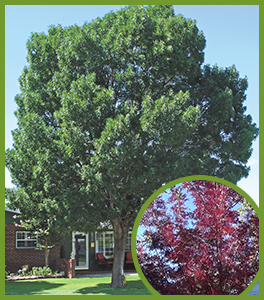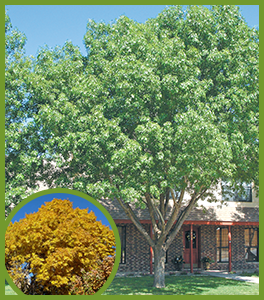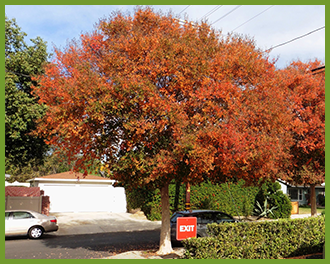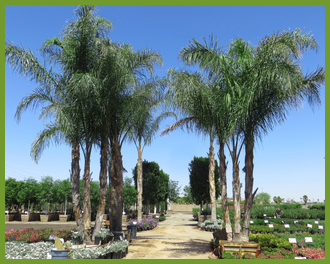
The fall season has finally arrived and as always it's the best time to plant. The combination of cool days and even cooler evenings allows the soil to hold the warmth from summer without the blistering sun pushing temperatures well over 100 degrees. This ideal balance encourages root growth all season long!
Now that we have transitioned to fall, our experts have compiled a few tips and tasks for your landscape this month.
To Do List:
-
Watering:
Now that we are in the fall season, it is imperative that you adjust adjust your watering schedule. The cooler nights and cooler days are going to translate into the ground retaining moisture longer thus permitting us to use less water going forward. The amount of water should not be cut back, however, the frequency at which you water your lawn will be reduced. Be sure to read up on our Watering Guide schedule.
-
Weeds:
Don't let those weeds settle! Remove them ASAP. We stock all the things you need for your weed prevention at our three locations in the Houston area. Also, consider adding mulch to areas to reduce the number of sprouting weeds.
-
Fertilizing:
We cannot stress the importance of fertilizing everything on your landscape. And we mean everything. All of your trees, flowers, vegetables, and lawns. It may not seem like it, but this is still the growing season and this is when your trees and plants are going to be utilizing the most nutrients. Once the temperature drops, the material on our landscapes will stop top growth and focus on root growth. This is the main focus of trees and plants during the cooler months. Fertilizing now and throughout the winter will allow the plant to soak up the nutrients and store them for explosive spring top growth. Everything should be feed with the proper fertilizer to ensure optimal growth during this crucial time. Moon Juice is a staple that should be used on all your trees, plants, flowers, vegetables and more all year round. This makes your watering more effective as well as making the nutrients more readily available for the plants and trees to uptake. The entire brand of Moon Valley Nursery fertilizers can be used now on everything from turf, palms, desert trees, shade trees, palms and more. Click here to see all of our fertilizers.
-
Tree Care:
Since everything is now starting to grow again we have to think ahead about proper care and trimming. Making sure you have your landscapes well cared for is a vital part in making sure you protect your investment. This time of year we can trim off any dead or sun damaged that may have occurred over the summer, cut back any excessive branches or some that may have been damaged by summer storms and also clean all of our citrus and fruit trees of unwanted suckers.
Below are a few trees our experts recommend planting for this month:

Red Maple
The "Autumn Blaze" Red Maple is a fast growing, strong shade tree that establishes itself quickly after transplanting. Once established, Red Maple trees are drought - tolerant, and able to be planted in landscape areas with little access to irrigation. The Red Maple's "Autumn Blaze" nickname comes from the shocking bright red color that grows in the fall, and is even more brilliant when planted in Houston and subjected to our constant moisture.

Red Oak
Shumard Red Oak trees are a popular tree native to the Texas region. This tree is popular for many reasons; it is a fast grower, sprouts a large canopy, and grows attractive foliage. This tree benefits all landscapes by working as a privacy hedge, blocking noise from traffic. Most importantly, its foliage changes with the seasons; allowing the sun to add heat to your home in the winter by dropping its leaves and growing its leaves back just in time for the summer blocking out the warm sun and adding cooler temperatures.

Raywood Ash
A popular choice for landscapes across the southwest, the Raywood Ash is known for its breathtaking display of rich red to deep burgundy foliage in the fall that gives any landscape a unique touch for the season. Its leaves drop off quickly after the fall season, allowing for an easy one time clean up. During the warmer months, the Raywood Ash is an ideal shade tree that grows more upright than it does wide. Its dark green foliage provides a sharp contrast to any landscape and looks great as a stand-alone or specimen shade tree where its exceptional beauty and color can be admired.

Arizona Ash
Native to the Grand Canyon State, the Arizona Ash is well suited to handle all extreme temperature changes. In the fall, this deciduous tree’s foliage turns into a vibrant golden color. The Arizona Ash is seedless and only requires one clean up once the leaves drop. The tree grows its leaves back quickly in the spring, which provides maximum shade in the summer months. Its canopy of shade covers a large amount of territory and its flowers form in small clusters in the spring.

Crape Myrtle
One of the best choices for beautiful bursts of color in your landscape is the Crape Myrtle. These trees produce exquisite colors in purple, pink, red, and white and look aesthetically pleasing to the eyes when they are planted in cluster on side views or accent location on your yard. These trees bloom early spring all in the way into the fall.

Piru Queen Palm
Specially grown at our farms, the Piru Queen Palm is unlike other Queen Palms. Our Piru Queen Palms feature thicker and harder trunks, denser and greener fronds, and produce fuller crowns. Our Queen Palms can handle hot summers, cold winters, and windy days. The palm is supported by a narrow trunk which makes it ideal in tight spaces around your pool, but it does require overhead space as the palm grows to statuesque heights.

Canary Island Date Palm
Also called the Pineapple Palm for its resemblance to a pineapple when the palm is younger, the Canary Island Date palm produces wide fronds and requires space when planted around a pool. It grows slowly, eventually forming a wide trunk and its fronds begin to rise from the ground, creating a classic palm tree shape. The Canary Island Date Palm can handle the cold and loves the sun. It’s a popular choice for tropical landscape and is commonly seen around resorts.
Submit a Comment